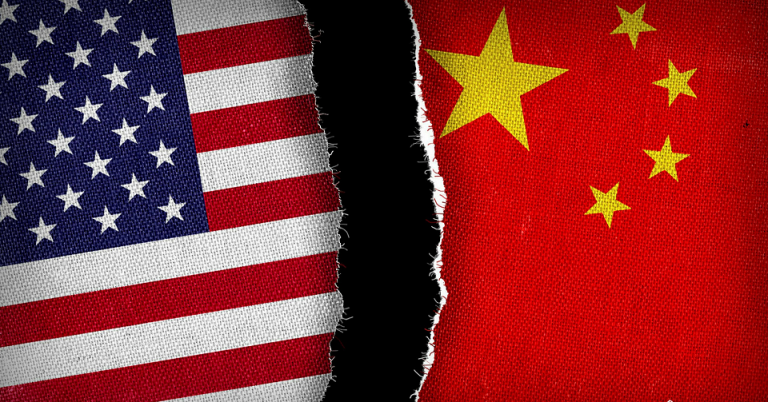
The United States and China have concluded two days of tense, high-level trade negotiations in London with what both sides describe as a breakthrough framework to restore the flow of rare earth metals and ease certain export controls — a deal now awaiting the approval of President Donald Trump and Chinese President Xi Jinping.
The talks, held behind closed doors at Lancaster House near Buckingham Palace, include US Commerce Secretary Howard Lutnick and US Trade Representative Jamieson Greer, while China dispatched Vice Premier He Lifeng and chief trade negotiator Li Chenggang. Over 20 hours of negotiations culminated in a late-night agreement on Tuesday, with officials describing the mood as “intense but productive.”
Lutnick confirmed that the two delegations had agreed on a path forward to implement the Geneva consensus reached last month, which had aimed to scale back tariffs imposed during the prolonged trade war.
Register for Tekedia Mini-MBA edition 19 (Feb 9 – May 2, 2026): big discounts for early bird.
Tekedia AI in Business Masterclass opens registrations.
Join Tekedia Capital Syndicate and co-invest in great global startups.
Register for Tekedia AI Lab: From Technical Design to Deployment (next edition begins Jan 24 2026).
“First we had to get sort of the negativity out,” Lutnick told reporters. “Now we can go forward to try to do positive trade, growing trade.”
Rare Earths at the Heart of a Larger Shift
The centerpiece of the agreement is China’s commitment to accelerate shipments of rare earth metals — elements critical for electric vehicles, missile guidance systems, smartphones, and other advanced technologies. In return, Washington will begin unwinding select export controls, particularly those related to industrial software and components needed by Chinese manufacturers.
This mutual compromise on rare earths and strategic goods is being interpreted by insiders as a potential inflection point. It’s believed that by resolving the long-standing deadlock on rare earth exports, both sides may be able to build momentum for addressing broader tariff disputes and other contested areas in trade.
Analysts note that rare earths have emerged as one of the most powerful bargaining chips in the US-China trade standoff. China controls over 70% of the global supply, and disruptions in recent months triggered alarm across major economies, particularly in Europe and Asia, where automakers and defense contractors have warned of production slowdowns.
While negotiators expressed cautious optimism, the agreement is still tentative. “We’ve got a framework, but we still need our principals to sign off,” said China’s Li Chenggang as he addressed reporters outside the historic venue around midnight.
The positive tone offered some relief to investors who feared an escalation in trade tensions. Markets responded with limited enthusiasm — US equity futures edged lower, the offshore yuan remained stable, and China’s CSI 300 Index gained nearly 1%, marking its best day in weeks.
“Markets will likely welcome the shift from confrontation to coordination,” said Charu Chanana, chief investment strategist at Saxo Markets. “We’re not out of the woods yet — it’s up to Trump and Xi to approve and enforce the deal.”
If approved, the rare earth arrangement is expected to act as a springboard for resolving contentious disputes on steel and aluminum tariffs, industrial overcapacity, and digital services taxes — all of which have weighed heavily on bilateral trade since 2018.
The Chips-for-Metals Conundrum
Lutnick hinted at concessions by Washington that would ease controls imposed under national security grounds.
“There were a number of measures the United States of America put on when those rare earths were not coming,” he said. “You should expect those to come off — sort of, as President Trump said, in a balanced way.”
That “balance,” however, is delicate. Export controls on semiconductor technologies and AI-enabling software remain politically charged in Washington, where hawks argue that loosening restrictions could empower Beijing’s military and surveillance capabilities. But Trump officials now appear willing to leverage some of those restrictions to secure concessions in other areas, especially rare earth access.
Wendy Cutler, a former senior US trade official, called the shift “unprecedented,” warning that the deal’s durability depends on sustained political will.
“It took two days, three US Cabinet members, and a Chinese vice premier just to get back to upholding the Geneva accord,” she wrote on LinkedIn. “That’s a preview for the next 60 days.”
What’s Next: 60 Days to Resolve Broader Issues
The Geneva deal in May established a 90-day pause on retaliatory tariffs, set to expire in early August. The current framework on rare earths buys time, but trade remains volatile. US imports from China dropped sharply in May, marking the worst contraction since early 2020, when China’s economy was shuttered by COVID.
Among the unresolved issues is China’s industrial overcapacity — particularly in steel, solar panels, and electric vehicles — which the US argues has led to global price distortions. In addition, the Trump administration has pressed China for measurable action on fentanyl production, an issue it cited in levying a 20% tariff earlier this year.
“President Trump is watching fentanyl closely,” said Jamieson Greer. “We would expect to see progress from the Chinese on that issue in a major way.”
No further meetings are currently scheduled, but both sides say discussions will continue remotely. “We hope the progress we made will be conducive to building trust,” Li Chenggang added.
Beyond trade data, what’s been most damaged by the years-long standoff is trust. According to Josef Gregory Mahoney, a professor of international relations at East China Normal University, “We’ve heard a lot about agreements on frameworks for talks, but the fundamental issue remains: Chips vs rare earths. Everything else is a peacock dance.”
However, many believe the rare earth deal may mark the beginning of a pragmatic phase. If both leaders endorse the proposal, it could open the door for more substantive discussions — not just on trade, but on global supply chains, climate coordination, and digital governance.



